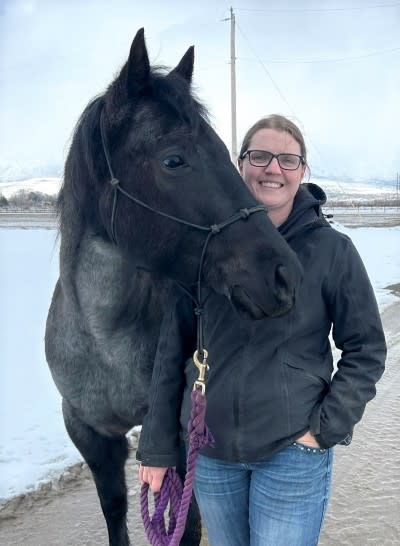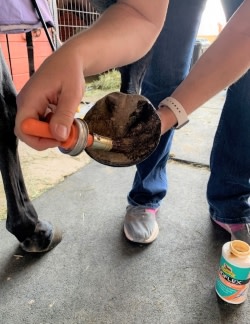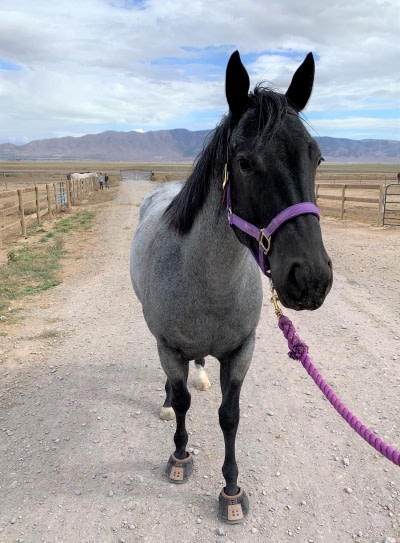Keeping My Horse Comfortable While Barefoot

When I got my Quarter Horse mare Kai in 2020, I noticed that she had a little bit of tenderness while walking on the barn’s driveway, which had a lot of small rocks. I mentioned it to my farrier when he came, and he discovered she has thin soles. Since Kai was just a yearling at the time, I had really hoped to leave her barefoot for quite some time while she was still growing and only starting to learn the ropes of being a willing equine partner.
We were only working a few hours a week, and she had no trouble in her stall, on turnout, or in the arenas. But I could tell the walk on the driveway to the arena was a struggle for her. I wanted to offer Kai some help, while also being reasonable with my hoof expectations.
Thankfully, my farrier is wonderful and gave me the full scope of options. Of course, front shoes were an option since she only seemed to be having trouble on her front feet. With her being young and not working much, paired with her only experiencing discomfort on the rocky driveway, he felt that shoes were unnecessary at this point. There were some other management practices he suggested we try to see if they helped before going the shoe route.

The first product he suggested was Hooflex Conditioner to help promote overall healthy hooves. He suggested applying it a couple times a week to Kai’s soles, frogs, and hoof walls. It helps with brittleness and also treats any bacteria or fungus that may be present. I love that this conditioner utilizes a breathable barrier to help maintain proper moisture balance, which is very important to keeping hooves supple. This way, when she goes from wet to dry conditions (think bath time or coming in to a dry stall from a damp turnout), I don’t have to be as concerned about damage to her hooves.
The second product my farrier suggested was a pair of hoof boots. I had never used hoof boots before, but he suggested using them when walking on surfaces that seemed to cause Kai discomfort. I put them on whenever we needed to travel on the driveway, and I plan to use them when we trail ride in the future. I decided to go with the Easyboot Trail Originals. They’re very sturdy, and I love the double Velcro in the back!
As far as measuring for them, my farrier gave me some good advice. Since it’s a bit challenging to try and use a tape measure while lifting your horse’s foot up, I wasn’t confident in my accuracy. He suggested having Kai stand on a piece of cardboard and then tracing the outline of her hoof directly onto the cardboard. Then, all I had to do was measure the cardboard trace, and boy was that a lot easier! It also allowed me to recheck my measurement without having to try and convince her to hold her hoof up to measure repeatedly. The pair of boots I ordered fit like a glove, and they’re easy to take on and off without cutting into too much riding time.

My final suggestion (and crucial piece!) is to make sure we maintain our trimming schedule with a good farrier. Maintaining good trims and overall hoof health is essential for any horse, especially one who has minor issues and wants to go barefoot.
Fast forward to 2023, and we’ve been able to stay barefoot and eliminate Kai’s discomfort on the rocky driveway with no issues! I hope to be able to continue to leave her barefoot for a while, but I’m glad to have the fallback of front shoes if this doesn’t provide enough support for her as she gets older and we do more trail riding.
I wanted to give a shoutout to my farrier for his knowledge and for being open to discussing a variety of options—we would be lost without him!